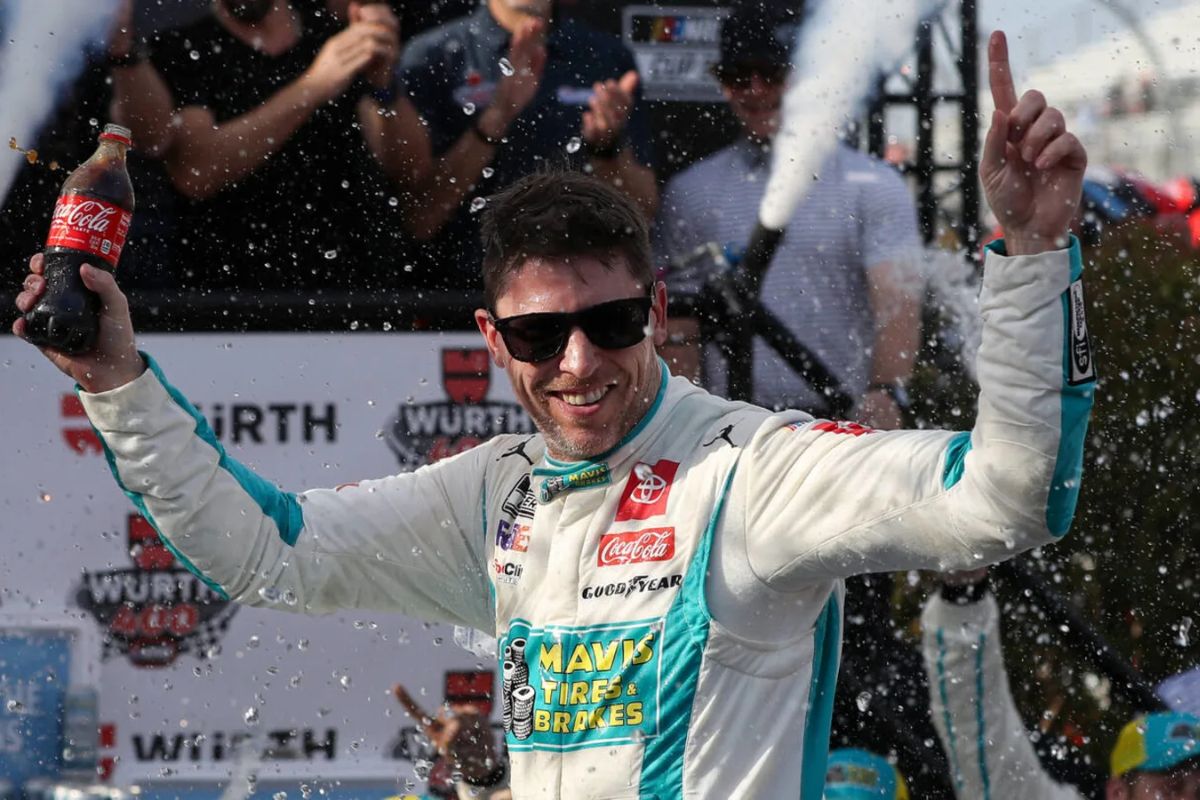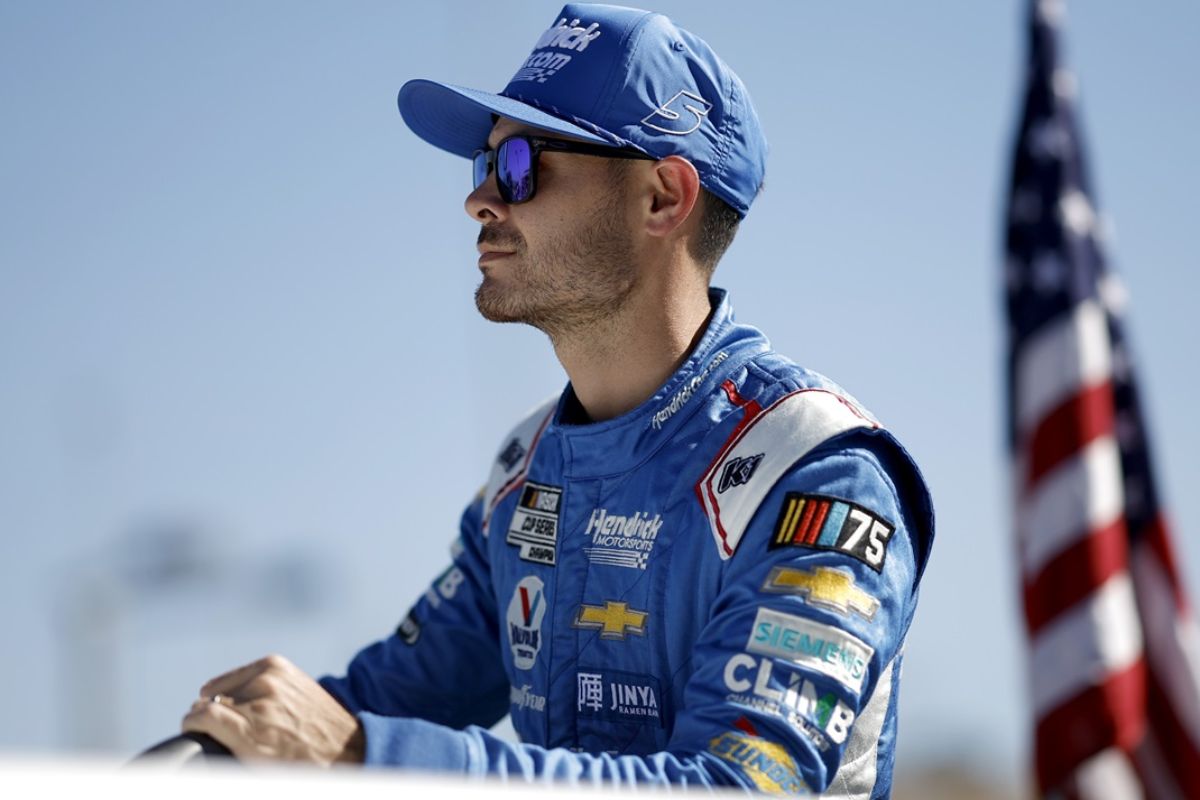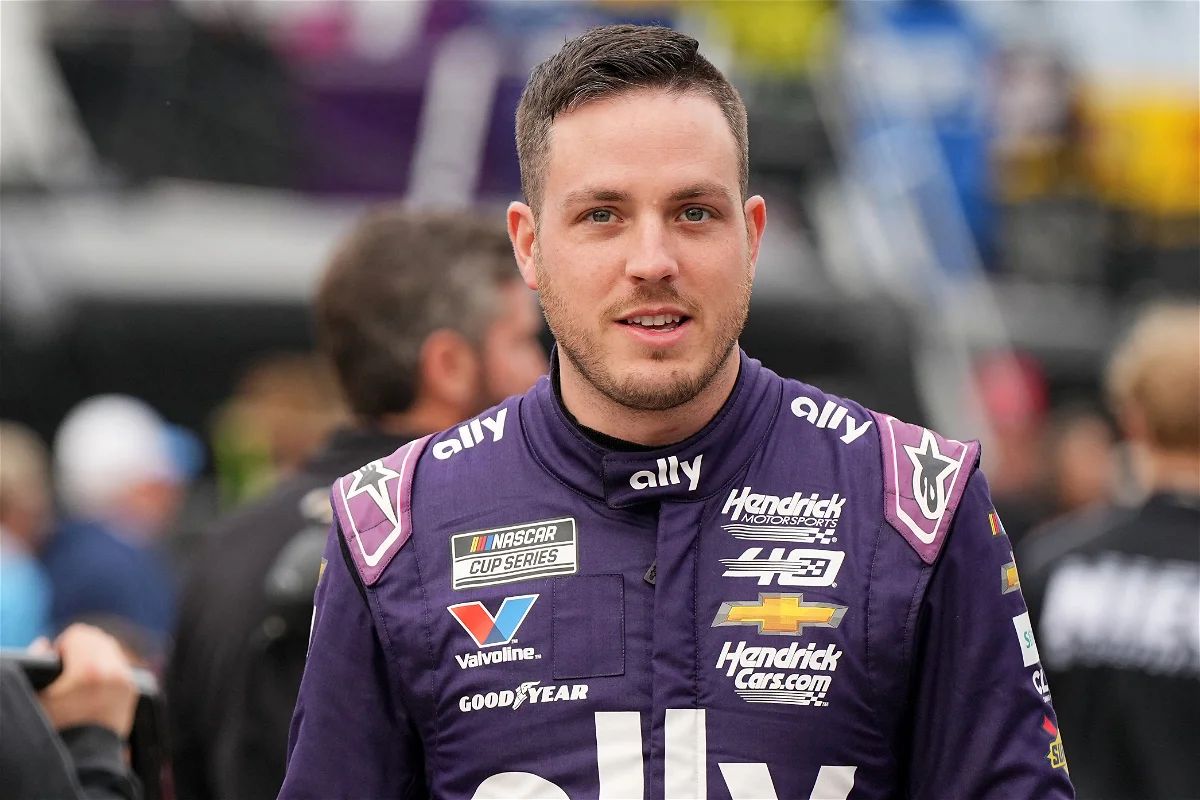Denny Hamlin Strikes Back: In NASCAR, Denny Hamlin’s recent victory at The Monster Mile not only reaffirmed his elite status but also intensified the intra-team dynamics at Hendrick Motorsports. By strategically outsmarting his teammate Kyle Larson, who has been a formidable force this season, Hamlin demonstrated a masterful blend of skill and strategic intelligence. This move has raised questions about the long-term implications for team cohesion at HMS and whether this victory signals a shift in internal team hierarchies.
Key Takeaways
- Denny Hamlin’s victory at The Monster Mile illustrated his competitive rebound within the NASCAR season.
- His masterful mirror-driving in the final stage effectively countered Kyle Larson’s advancements.
- The win at Dover followed disappointing performances, showcasing Hamlin’s ability to capitalize on critical moments.
- The race incident involving Larson and Chase Elliott reshaped the competitive dynamics, benefiting Hamlin.
- Hamlin’s strategic use of past race observations, particularly from Texas, enabled his dominant performance against HMS teammate Larson.
Denny Hamlin Regains Victory at The Monster Mile
Denny Hamlin’s victorious return at Monster Mile not only marked his 54th win but also signaled a significant rebound from recent setbacks. This success at Dover not just highlights Hamlin’s resilience but also underlines a critical turning point in the NASCAR season, where the stakes intensify and the tension mounts. His recent performances at Texas and Talladega were tainted by disappointing finishes which hinted at potential vulnerabilities in strategy and execution. However, his latest win is a testament to a well-orchestrated comeback, highlighting his ability to recalibrate and refocus under pressure.
Hamlin’s win is particularly significant in the context of the season-long rivalry between Joe Gibbs Racing and Hendrick Motorsports. By securing this victory, Hamlin not only achieved personal redemption but also propelled his team to a stronger competitive position. This dynamic adds a layer of strategic complexity to the races, as each team vies not only for individual race wins but also for supremacy in this high-stakes duel.
Hamlin’s Mirror-Driving Masterclass Receives Attention
While securing his latest victory, Hamlin’s adept ‘mirror-driving’ during the final stage garnered widespread attention, demonstrating a strategic masterstroke in holding off Kyle Larson. Mirror-driving, a technique where a driver uses their rear-view mirror to block competitors by strategically positioning their car, is often controversial but undeniably effective. Hamlin’s execution of this tactic was a testament to his situational awareness and deep understanding of race dynamics.
The significance of Hamlin’s mirror-driving in this particular race cannot be overstated. It was not merely a defensive act; it was an aggressive form of race management that required precision and foresight. Critics of the technique argue that it borders on unsportsmanlike conduct, yet it remains within the bounds of racing regulations. The effectiveness of Hamlin’s approach is evident in the outcome of the race, where strategic positioning trumped raw speed.
This incident also highlights the evolving nature of race strategy in the Next-Gen era, where aerodynamics and car positioning have taken on increased importance. The ability to ‘aero-block’—using the car’s aerodynamic wake to hinder a following car’s progress—is becoming a critical skill.
Kyle Larson’s Missed Opportunity
Kyle Larson’s third disappointing podium finish of the season at Dover was aggravated by a major crash involving his teammate Chase Elliott, highlighting a missed opportunity in a critical race. This incident not only tarnished Larson’s race strategy but also emphasized the delicate balance of team dynamics and personal championship aspirations within Hendrick Motorsports.
Larson, who had been in a promising position to battle for the win, found his race compromised by the chaos triggered by Elliott’s crash. The accident, which also took out notable competitors like Christopher Bell and William Byron, reshaped the competitive landscape of the race. Larson’s ability to navigate through the disrupted field demonstrated his driving skills but also brought to light the inherent risks associated with packed, aggressive racing environments.
Denny Hamlin Reveals Motivation Behind Dover Win
Reflecting on his recent setback at Texas, Denny Hamlin used lessons learned to masterfully execute the final restart at Dover, overtaking Kyle Larson and capturing a pivotal win. The significance of this victory cannot be overstated, given its context and the skillful navigation that led to it. Hamlin’s comments post-race provided a deeper understanding of his strategic approach and the motivations driving his performance. Denny Hamlin’s insights reveal a mix of tactical expertise and a drive to redeem himself after previous challenges.
“So we didn’t have many laps on our tires, and at that point, I started on the inside, second. And second, typically has been a tough place to start at Dover. But the gearing is kind of wonky where first gear is way too much at that track. Second gear is not enough, and NASCAR does that to try to keep our gear selections the same at all tracks. So they they want to do, if they can a one-size-fits-all when it comes to gearing.“
“And I think he (Larson) says he gets a hit from the #19 that when he starts to go, he gets hit… Then his wheels start spinning. And then I took off and ’cause I didn’t get hit from behind and it allowed us to be even at the start-finish line. I drive into the corner… Hold it down low, and I clear him and I’m like yes. Now I’m in control of the race so trust me I felt the pain of the other side of that when Chase Elliott did it to us you know a few weeks ago at Texas.
“I mean that was the race. I was going to win that race for sure and then he did a great job on the restart the caution comes out and he’s six inches ahead of me. He controls the restart and that was game over after that.“-Hamlin
- Strategic Learning from Past Setbacks: Hamlin explicitly mentioned his recent race at Texas as a learning curve. Observing Chase Elliott’s winning tactics there, he recognized the importance of precision and timing during restarts, which he replicated to outpace Larson at Dover.
- Psychological Resilience: Despite the disappointment at Texas, Hamlin displayed remarkable mental strength. Instead of letting the setback undermine his confidence, it fueled his resolve to succeed, showcasing his psychological fortitude in high-stakes situations.
- Execution Under Pressure: The final restart was not merely about speed but also about strategic positioning and timing. Hamlin’s execution demonstrated his ability to capitalize on critical moments, turning potential pitfalls into a strategic advantage.
Alex Bowman’s Overlooked Performance
Amid the intense focus on Denny Hamlin’s victory at Dover, Alex Bowman’s struggles have largely escaped the spotlight, despite his ongoing quest for a season-first win. Bowman, as the sole Hendrick Motorsports driver yet to mark a victory in the 2024 season, finds himself in an increasingly precarious position. His performance at Dover, while overshadowed by the dramatic showdown between Hamlin and Larson, signals deeper challenges within his campaign.
Analyzing Bowman’s race at Dover, one notes a pattern of missed opportunities and strategic missteps. Unlike his teammates, Bowman has struggled to capitalize on critical moments, often finding himself outperformed in the mid-field battles that are important for securing better positions and, ultimately, points.
300th climb in and 400 miles for @Alex_Bowman today.
Where are you watching from? pic.twitter.com/bxvmkLcdS4
— Hendrick Motorsports (@TeamHendrick) April 28, 2024
Looking forward, the upcoming race in Kansas presents an important opportunity for Bowman to recalibrate his season. The tracks at Kansas have historically favored drivers who excel in managing tire wear and executing flawless pit strategies—areas where Bowman has shown competence in past seasons.
News in Brief: Denny Hamlin Strikes Back
Denny Hamlin’s recent victory at The Monster Mile exemplifies a strategic masterstroke in NASCAR racing. Particularly through his adept use of mirror-driving to secure a win over teammate Kyle Larson. This success not only reaffirms Hamlin’s skill and strategic intelligence on the track but also intensifies the competitive dynamics within the HMS team. It highlights a resurgence in Hamlin’s performance, positioning him as a strong contender in the ongoing NASCAR season.
Our Reader’s Queries
Q. Who won the cup race?
A. Following Sunday’s Cup race at Dover Motor Speedway, drivers shared their thoughts on the competition. Denny Hamlin, the race winner, reflected on his victory, noting, “The pivotal moment came when I managed to pass (Kyle Larson) during that rapid restart following the caution.”
Q. Has Denny Hamlin won a road course race?
A. Hamlin subsequently fended off a determined Martin Truex Jr., narrowly surpassing the No. 78 car by a mere .010 seconds, marking the closest finish in the race’s history. Securing his inaugural road course triumph, Hamlin led for just 10 laps out of the 90-lap race, but it was those final laps that proved to be the most crucial.
Q. Does Denny Hamlin still drive?
A. Denny Hamlin occupies a unique position within the NASCAR Cup Series drivers’ landscape. Despite his ongoing role as a driver for Joe Gibbs Racing, Hamlin also holds the title of co-owner at 23XI Racing, alongside basketball icon Michael Jordan. This dual role underscores Hamlin’s multifaceted involvement and influence within the sport, blending his prowess on the track with his strategic vision for team ownership.
ALSO READ: Denny Hamlin Responds to Larson Amid Dover Disappointment



